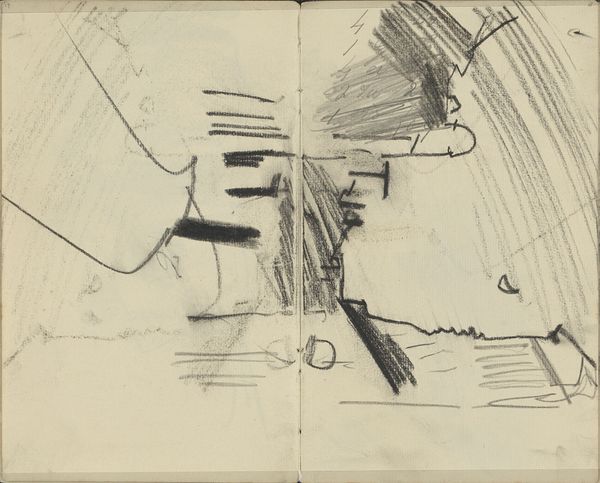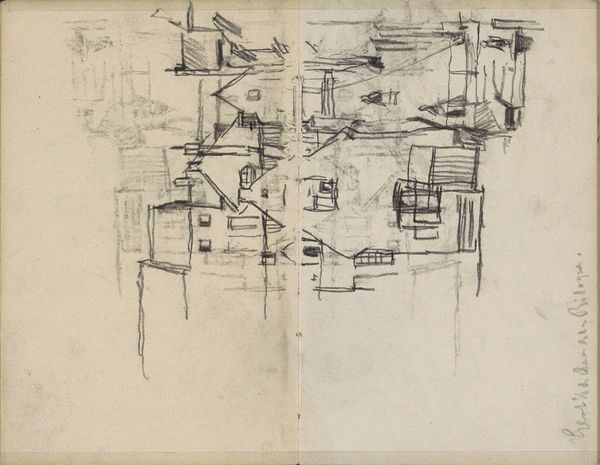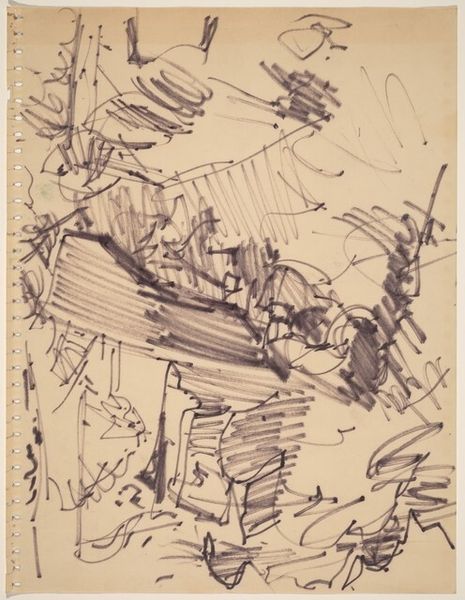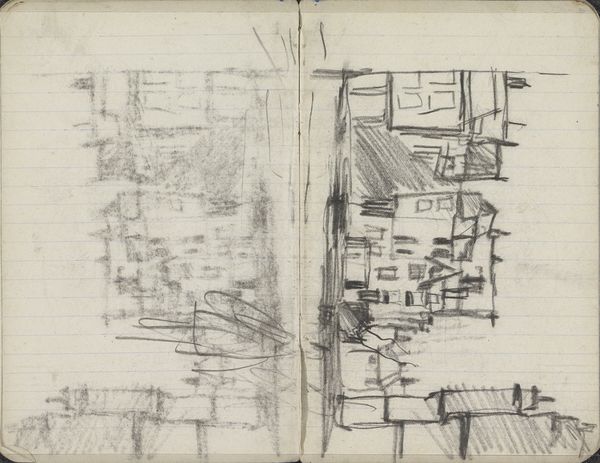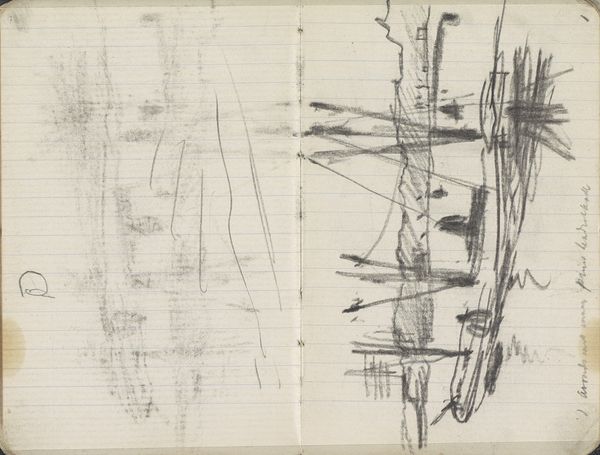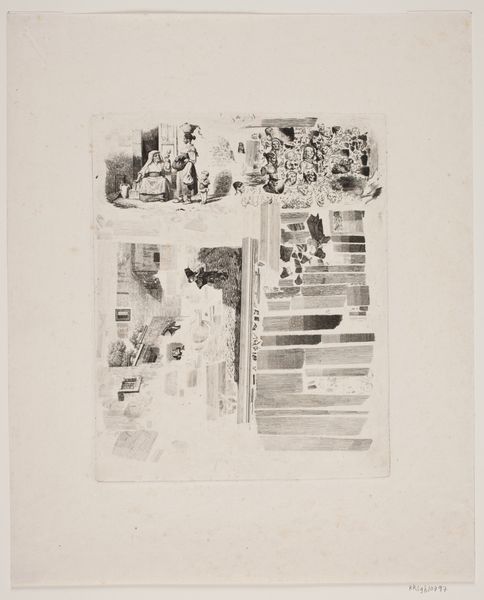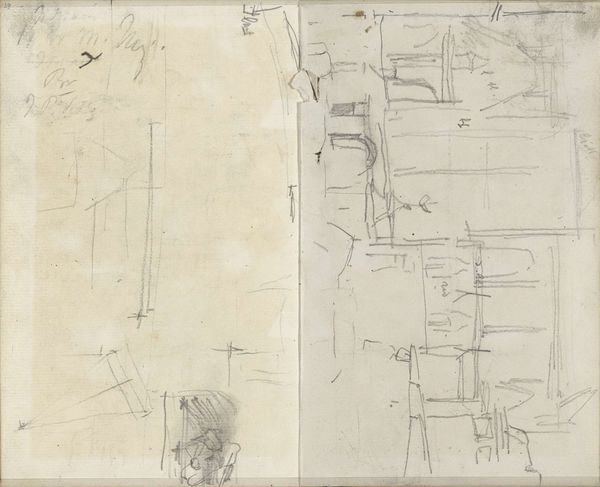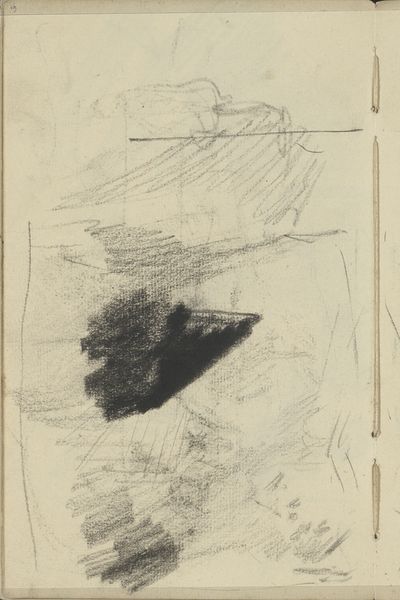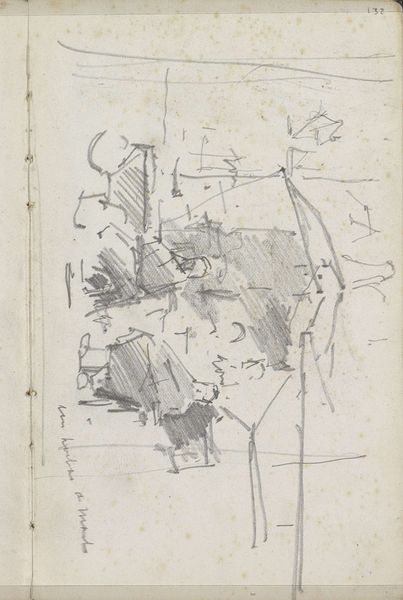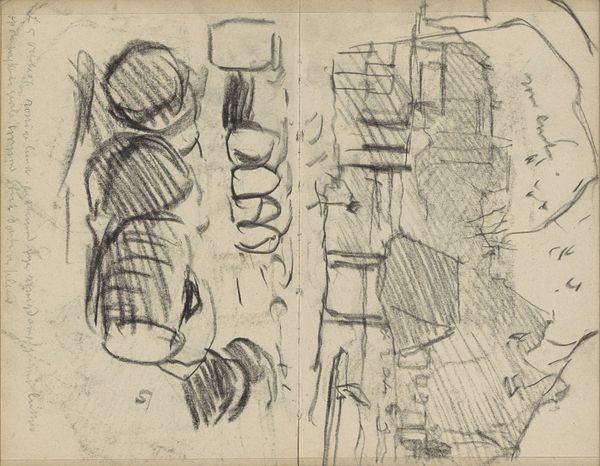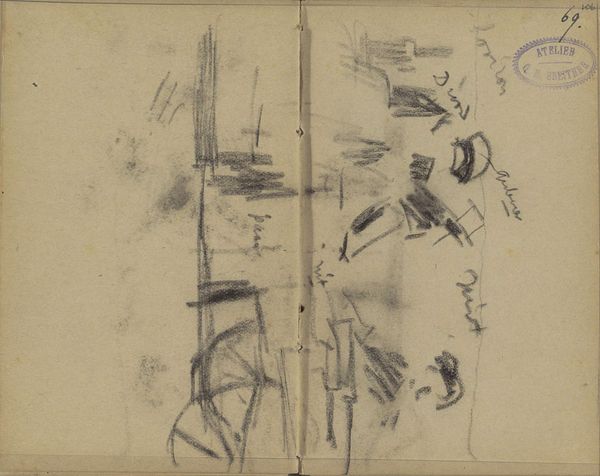
drawing, mixed-media, coloured-pencil, paper, watercolor
#
drawing
#
mixed-media
#
coloured-pencil
#
water colours
#
paper
#
watercolor
#
coloured pencil
#
abstraction
Dimensions: overall: 31.1 x 25 cm (12 1/4 x 9 13/16 in.)
Copyright: National Gallery of Art: CC0 1.0
Editor: This is "Embroidery: Technique Demonstration," made between 1935 and 1942. It’s an anonymous piece using drawing, mixed-media, and coloured pencil, on paper. I find it quite fragmented; it’s hard to grasp the whole, but the textures are fascinating. What do you see in this piece? Curator: I see a dialogue with tradition, disrupted by the avant-garde. The title evokes domestic craft, specifically "embroidery," traditionally linked to female artistry and skill. But consider how these blocks of color, these sketched lines, dismantle that expectation. Notice how it blends recognizable geometric forms – the squares – with suggested shapes resembling textile samples. Editor: So, you think it’s challenging the idea of embroidery rather than demonstrating it? Curator: Precisely! Think of the cultural weight associated with textiles - family history, skill passed down through generations, national identity itself is sometimes woven into fabric. This artwork offers not the comfort of tradition, but its deconstruction, doesn't it? What feelings arise as you ponder those conflicting components? Editor: It definitely feels unfinished, like a thought process captured mid-stream. Is there a reason to think the abstraction represents progress? Curator: The years it was made were turbulent. Was this artist reckoning with shifting gender roles? Industrialisation undermining handcraft? The symbolic break with a comfortable past could speak to larger societal anxieties. Does seeing it that way change how you engage with the artwork? Editor: Absolutely, it adds depth to what I initially saw as just a series of abstract shapes. The "unfinished" aspect makes more sense in this context, actually. Curator: Indeed. Visual cues, however abstract, resonate from collective experiences. Recognizing those can make art history profoundly moving.
Comments
No comments
Be the first to comment and join the conversation on the ultimate creative platform.
